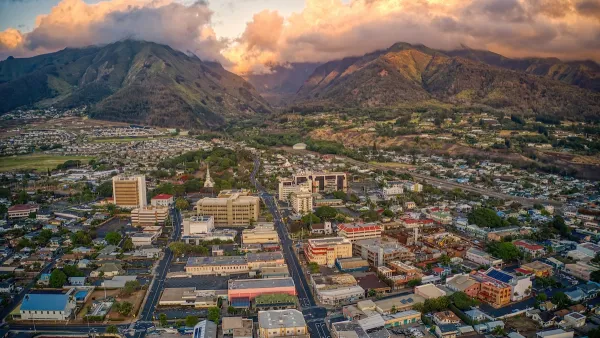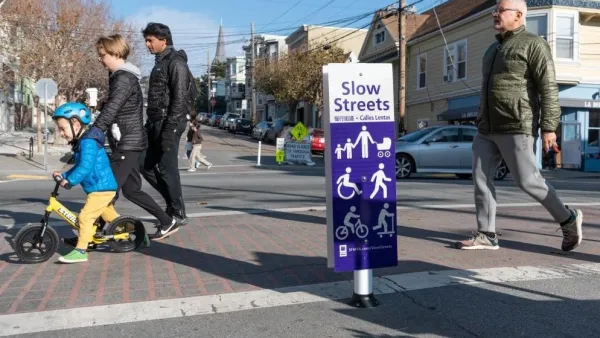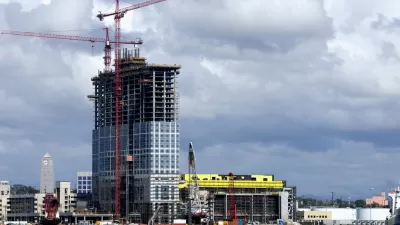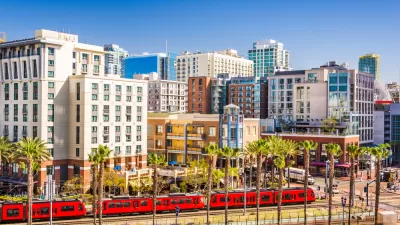When first announced in 2014, the Morena Corridor Specific Plan provoked protests. The plan has changed, but it now finally has initial approval from the San Diego City Council.
"The San Diego City Council tentatively approved two plans Thursday to let housing developers build more than 9,000 units near transit stations in Pacific Beach, Clairemont Mesa and Linda Vista," according to a city news service announcement published on August 1, 2019.
Prior to the vote, Andrew Keatts reported on the Morena Corridor Specific Plan, which had a long route to this benchmark moment.
"Five years, two City Council races and three planning directors later, San Diego is poised to make way for new homes near the largest transit investment it’s ever made," according Keatts. The plan also overcame a "fierce and well-organized neighborhood opposition" to reach this point.
Keatts summarizes the plan, which is intended to integrate land use density with the new Mid-Coast Trolley line coming to the city:
The city’s proposal would let developers build some 6,000 new homes near a new trolley station at Morena Boulevard and Tecolote Drive, and would rebuild the suburban, big box retail plots with a classic urban street grid. The Council will also decide whether to make way for 3,500 new homes at the planned station near Balboa Drive and Morena Boulevard, but only on the western side of I-5, in Pacific Beach. The city’s plan would also narrow Morena Bouelvard from four lanes to three while making way for new protected bike lanes and an improved pedestrian way along the commercial corridor.
FULL STORY: Council to Weigh Morena Plan That’s Become a Proxy for Growth Citywide

Planetizen Federal Action Tracker
A weekly monitor of how Trump’s orders and actions are impacting planners and planning in America.

Maui's Vacation Rental Debate Turns Ugly
Verbal attacks, misinformation campaigns and fistfights plague a high-stakes debate to convert thousands of vacation rentals into long-term housing.

San Francisco Suspends Traffic Calming Amidst Record Deaths
Citing “a challenging fiscal landscape,” the city will cease the program on the heels of 42 traffic deaths, including 24 pedestrians.

Amtrak Rolls Out New Orleans to Alabama “Mardi Gras” Train
The new service will operate morning and evening departures between Mobile and New Orleans.

The Subversive Car-Free Guide to Trump's Great American Road Trip
Car-free ways to access Chicagoland’s best tourist attractions.

San Antonio and Austin are Fusing Into one Massive Megaregion
The region spanning the two central Texas cities is growing fast, posing challenges for local infrastructure and water supplies.
Urban Design for Planners 1: Software Tools
This six-course series explores essential urban design concepts using open source software and equips planners with the tools they need to participate fully in the urban design process.
Planning for Universal Design
Learn the tools for implementing Universal Design in planning regulations.
Heyer Gruel & Associates PA
JM Goldson LLC
Custer County Colorado
City of Camden Redevelopment Agency
City of Astoria
Transportation Research & Education Center (TREC) at Portland State University
Jefferson Parish Government
Camden Redevelopment Agency
City of Claremont




























